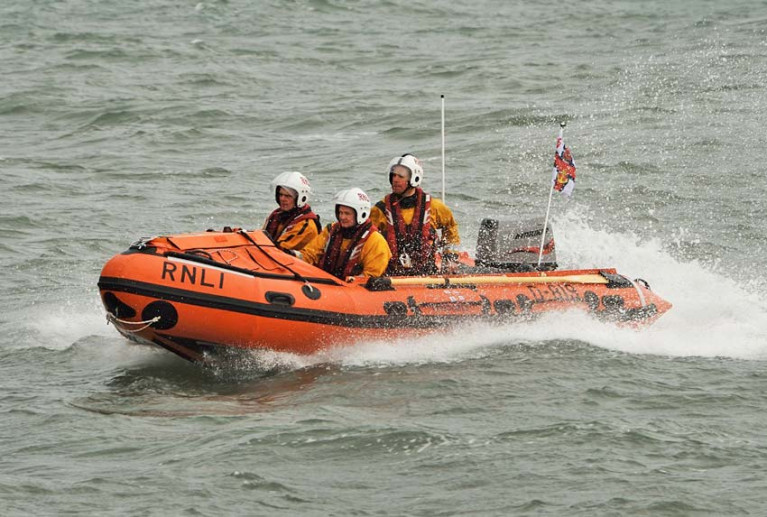The volunteer lifeboat crew at Fethard RNLI were called out on Tuesday evening (28 April) to reports of a lone walker cut off by the incoming tide with no way of getting to safety.
During his walk the man had made his way from Bannow to the area known as Cocklestrand and continued along the sand, west of Bannow Island.
However, he did not notice that the tide was coming in and that the water was rapidly rising.
At this point, around 7pm, he could not make his way back to the shore as the channel had filled — but he was able to raise the alarm by with the Irish Coast Guard by mobile phone.
At 7.22pm the inshore lifeboat arrived on scene, where the crew were joined by the Waterford-based coastguard helicopter Rescue 117. However, the decision was made to bring the casualty aboard the lifeboat and the helicopter was stood down.
The walker was quickly assessed to gave no injuries and he was taken back to land at Cocklestrand. No further assistance was required.
Commenting on the callout, Fethard RNLI helm Eoin Bird said, “Thankfully conditions on scene were good with a calm sea state and a light southerly wind with excellent visibility.
“People are keen to exercise outside within Government guidelines and we are lucky enough to live in a beautiful area with access to the coast.
“However, we would advise people to keep an eye on their surroundings, in particular incoming tides and also to watch their footing on the shoreline.
“Fethard RNLI remain on call and fully operational during the Covid-19 pandemic. There is no crew training or exercises taking place at the moment but we are here if people need us.”
The RNLI and Irish Coast Guard this week renewed their call for people not to use the sea for exercise or recreation while the current restrictions are in place, as we head into the May Bank Holiday weekend.































































